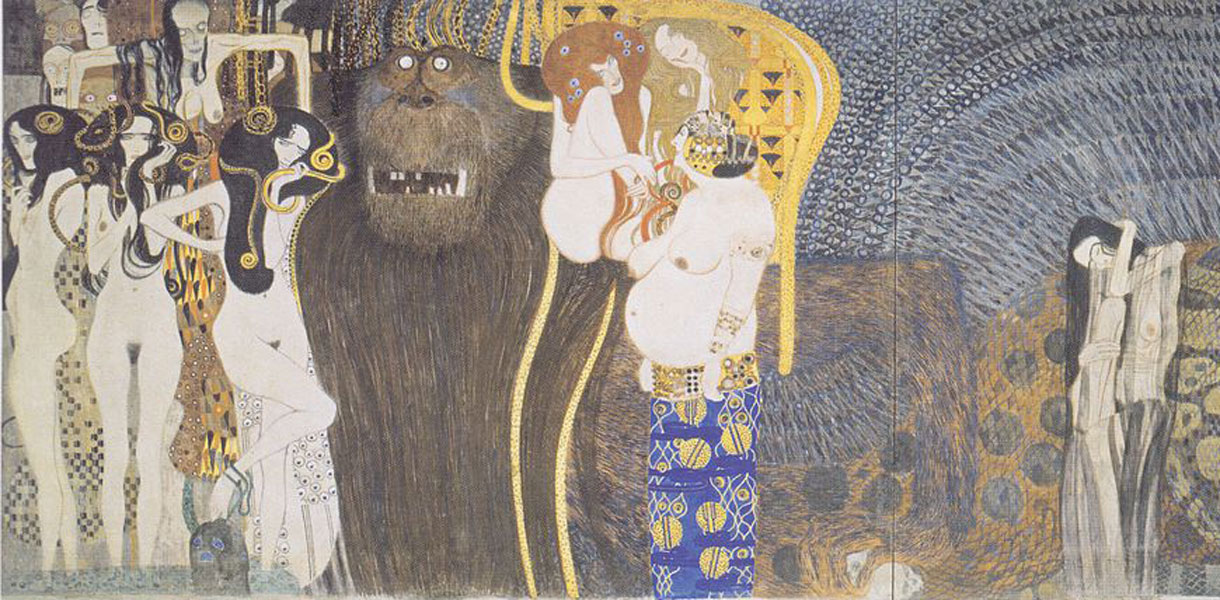
Acquired and restored by the Austrian government in the 1970s, the painting is now installed in a climate-controlled room on the Secession Building basement level. The 34-meter-long painting cycle originally occupied three sides of one of the aisles on the pavilion’s ground floor painted on thatch panels as an ephemeral work, the frieze was cut in eight parts and sold to a Viennese collector in 1903. As the title suggests, the painting was a tribute to Ludwig Van Beethoven on the 75th anniversary of the composer’s death. The Beethoven Frieze is a large wall painting created by Gustav Klimt in 1902 for the XIV Secession exhibition.

Photo Jorge Franganillo, CC BY 2.0 / Flickr Secession Building, detail of the facade with the lattice dome made of gilt bronze leaves. In this sense, the Secession Building is the perfect incarnation of the transition between 19th-century historicism and modernity the Viennese Secession represented both in visual arts and architecture.ĭevoid of any decoration, the pavilion’s internal space is divided into an entrance area and an exhibition area that comprises three rectangular rooms arranged around a central square hall, all illuminated naturally by four large glass skylights. The entrance facade is decorated with Gorgon masks, a floral frieze, and two inscriptions, one reading Der Zeit ihre Kunst, der Kunst ihre Freiheit (To every age its art, to every art its freedom) and the other with the motto “Ver Sacrum” (Sacred Spring in Latin, the name of the official magazine of the Secession movement)ĭespite its many references to ancient architecture – especially Greek, Assyrian, and Byzantine – Olbrich’s building moved on from the redundant eclectic style of the time towards the simple and unadorned geometric forms which will be a hallmark of the early-20th century Modernist Architecture movement. It is a rather severe cubic building, painted in white and topped by an almost spherical lattice dome made of laurel leaves in gilded bronze and popularly dubbed “The Golden Cabbage” by the Viennese people.

The pavilion features the typical Viennese Secession architectural style. The 1000-square-meter Secession pavilion was designed by Austrian architect Joseph Maria Olbrich between 18 as a venue for exhibitions of contemporary art. The Vienna Secession Building ( Wiener Secessionsgebäude in German) is an 1898 listed building and an art exhibition hall in Vienna it also contains the Beethoven Frieze by Gustav Klimt.Ĭover image: Joseph Maria Olbrich,1898.


 0 kommentar(er)
0 kommentar(er)
